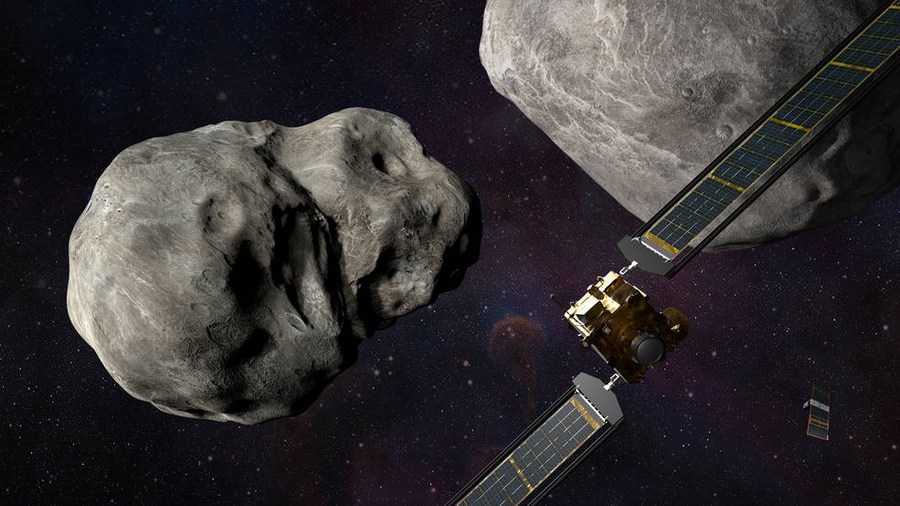NASA’s DART (Double Asteroid Redirection Test) spacecraft was deliberately flown into an asteroid 11 million kilometers away from Earth on Tuesday, September 27, according to the space agency. It was aimed at the smaller asteroid in a binary system to see whether, in the future, projects like this could be used to alter the trajectory of extra-terrestrial bodies that might be dangerous to our planet.
Dimorphos, a 160m-wide asteroid, orbits the larger Didymos, which in turn orbits the Sun. Neither posed a threat to Earth. It is unclear so far what effect the DART impact might have had on Dimorphos’s orbit around its larger sibling, but telescopes in observatories around the world—as per Wired, “in Arizona, New Mexico, Chile, and elsewhere”—will closely monitor the pair to assess the feasibility of such a strategy against larger asteroids that could potentially pose an existential risk to humanity.
While the DART spacecraft was initially guided by a team on Earth, its last small adjustments were made by its onboard Didymos Reconnaissance and Asteroid Camera for Optical navigation (DRACO) system, because of the delay involved in manually sending instructions across the vast distance that separates the craft from us. This camera, DRACO, is also what allowed the craft to distinguish between the two asteroids and captured the final images of the asteroid before it went offline in the collision.
Thomas Zurbuchen, of NASA’s Science Mission Directorate, noting the success of the targeting system, said, in a NASA press release, “Now we know we can aim a spacecraft with the precision needed to impact even a small body in space.”
Lindley Johnson, NASA’s Planetary Defense Officer, added, “DART’s success provides a significant addition to the essential toolbox we must have to protect Earth from a devastating impact by an asteroid. This demonstrates we are no longer powerless to prevent this type of natural disaster. Coupled with enhanced capabilities to accelerate finding the remaining hazardous asteroid population by our next Planetary Defense mission, the Near-Earth Object (NEO) Surveyor, a DART successor could provide what we need to save the day.”





